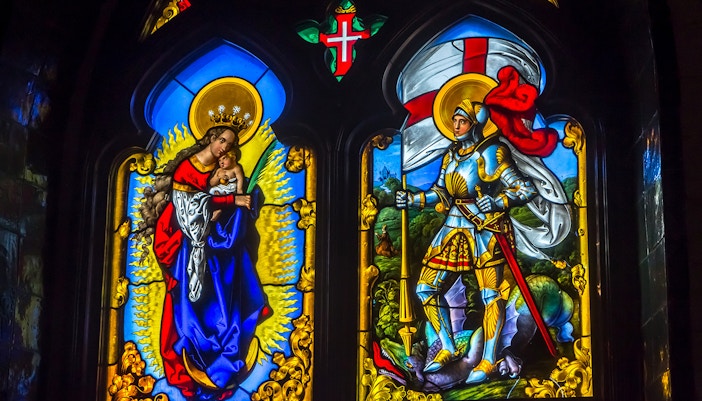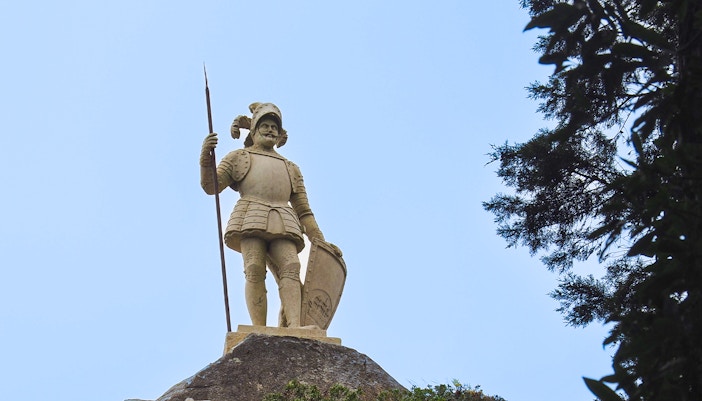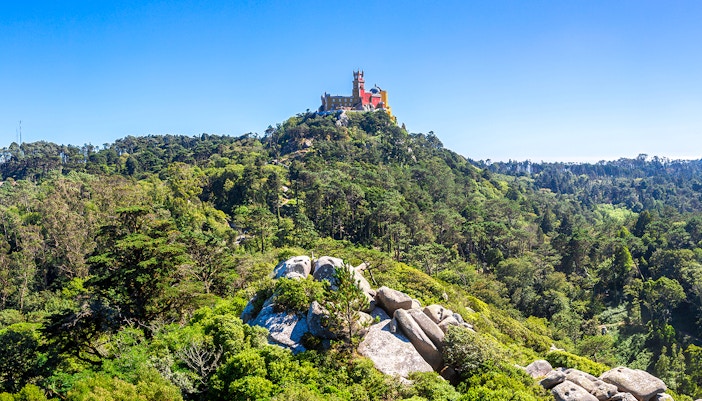Address: Estrada da Pena, 2710-609 Sintra, Portugal
Perched atop the Sintra Mountains, Pena Palace commands a breathtaking view over the picturesque town of Sintra and the rolling hills of Portugal's countryside.
Closest landmark: Sintra National Palace (4 kilometers away)









